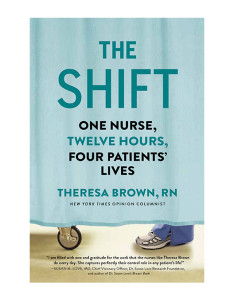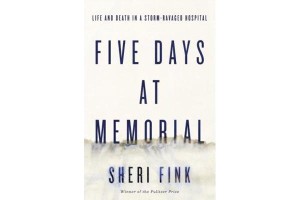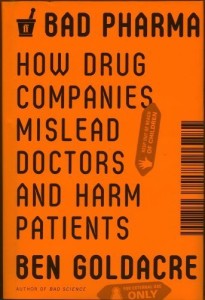Theresa Brown’s The Shift: One Nurse, Twelve Hours, Four Patients’ Lives is an account of one day in her life as an inpatient nurse on a hematology/oncology unit in Pittsburgh. The book is brilliantly executed. It’s a great portrait of one worker’s life-world, and it’s a great portrait of a hospital as an all-too-human institution. I hope it’s still being read twenty years from now.
To writers outside of health care, Brown’s material might sound like low-hanging fruit. How hard can it be, you might think, to put together a compelling book about twelve hours on an oncology unit? You’ve got life-threatening illnesses and exhausted, terrified family members. You’ve got nurses and physicians working under pressure. You’ve got a chronological hook. The stories tell themselves, right?
Actually, they don’t. Writing well about nursing requires clearing a long row of hurdles.
 First, there’s the challenge of protecting patients’ privacy and dignity. Any stories nurses tell need to be anonymized. Genders, ages, diagnoses: all of those go through the rinse cycle.
First, there’s the challenge of protecting patients’ privacy and dignity. Any stories nurses tell need to be anonymized. Genders, ages, diagnoses: all of those go through the rinse cycle.
At the same time, readers need to trust that the nurse-writer is telling the truth, even though she may have moved a few degrees away from nonfiction in the strictest sense. You can’t fudge. You can’t make yourself seem any more or less competent than you actually were, the patients any more or less stoic, etc., etc.
I can’t, of course, know with any certainty how well Brown has anonymized her patients in The Shift, or whether she has fudged her narratives in ways that matter. I can say that I have almost exactly the same job that she describes here, and I didn’t spot any failures of verisimilitude. On almost every page I thought, Yep. This is my world. And none of the book’s events seem to have been engineered to create a tidy narrative, to flatter Brown’s role, or to bludgeon a point into the reader’s head. It feels like life.
Next, there are challenges of tone.
If you write about some exceptional thing you did for a patient — catching a medication error, massaging a family conflict, spotting a potential deep vein thrombosis — you risk sounding boastful.
If you write about the frustrations of the job — understaffing, miscommunication, miserably designed software — you risk sounding whiny.
If you write about terminally ill patients, you risk sentimentality — or, worse, parasitically feeding on the suffering of others.
At various points, this book skirts the edge of all three of those pitfalls. But most of the time Brown’s voice is just right: low-key, attuned to concrete details, warm without being syrupy, skeptical without being cynical.
Finally, there are challenges of narration and explanation. This is where Brown’s book succeeds better than any nursing testimony I’ve ever read.
It’s possible to describe almost any other hospital role in two or three sentences, but bedside clinical nursing has evolved in strange ways. It’s a platypus. The job’s core tasks — physical assessments, medication administration, wound care, patient teaching — have been married to dozens of others. During any given hour, nurses need to be prepared to be something like a counselor, something like a housekeeper, something like an occupational therapist, and something like a physician’s assistant.
For a nurse writing for a non-nursing audience, here’s the problem: You can isolate and describe one element of the nursing role — say, the responsibility to do final checks to verify that a medication is safe to give to a patient. But even if you explain that element with perfect accuracy and clarity, you still won’t have conveyed much at all of what it’s like to be a nurse.
What is it like to be a nurse? It’s a deluge of obligations and stimuli. You need to be able to move rapid-fire from psychomotor tasks (changing a dressing, managing an IV infusion) to cognitive work (calculating and verifying dosages) to emotional labor (comforting a patient before a surgery that she might not survive).
What Brown does so well in The Shift is to embed her explanations of her patients’ struggles and her hospital’s structure and culture within an account of her subjective experience — her moments of exhaustion, curiosity, annoyance, her flashes of adrenaline.
Here’s a small piece of the book, chosen almost at random:
I used to love a comic book series called the Legion of Super Heroes. One of the super heroes, named Duo Damsel, often comes to mind when I’m at work. She could divide into two fully intact versions of herself just by concentrating. Maybe I could do that, too, if I tried really hard. Maybe just today — just this one time. If I really wanted it.
My phone keeps ringing. No matter how hard I concentrate, it’ll only be me here. I hit the talk button. “Medical Oncology, Theresa.” It’s the OR scheduler. Sheila’s set for 7 p.m. at the earliest. They couldn’t get her in any sooner. “We need the pre-op checklist done before she gets here,” the guy tells me.
Love the emphasis on before, as if I don’t understand that “pre-op” indicates “prior to the operation.” I want to respond with something clever and sarcastic, but I just say yes and hang up. What’s the point? He may be a rude SOB, or maybe he’s overworked like the rest of us, or both. I write down the OR number and then banish him from my memory.
Banishment from memory is one of the book’s recurrent notes. Brown isn’t sure how much it’s healthy to worry about her patients on the days when she’s off duty. If she puts her patients’ pain out of her mind during her civilian days, does that make her a little bit inhuman? Or is that kind of temporary forgetting necessary to stay sane as an oncology nurse? On another level, there is the constant moment-to-moment struggle to remember a thousand small tasks that need to be done on the unit: A cup of water that you promised a patient twenty minutes ago. Flowsheets that need to be finished. Bowel sounds that need to be checked.
The Shift isn’t perfect. There are moments of overripe prose. There might be a few too many literary references. Brown has weirdly little to say about nurses’ aides, who (at least in my world) can make the difference between a good and a bad day on the unit.
And Brown rarely says anything explicit about nurses’ attempts to step back from the deluge and to shape the conditions of their own work. There’s nothing here about hospital-level clinical practice committees. Nothing about unions.
But those are small flaws. For patients and patient advocates who are fighting for better, safer hospital experiences, The Shift should be a useful lens into the structures, routines, and incentives that shape nurses’ days, for better and for worse.
And for nurses like me, The Shift is an exceptional mirror of our work. I’ll be thinking about it for a long time.

